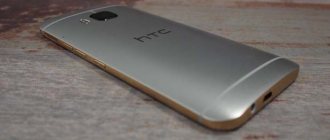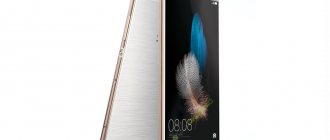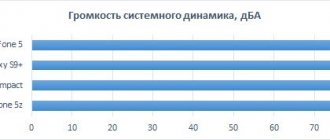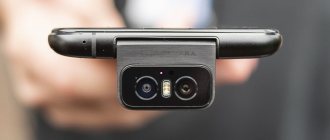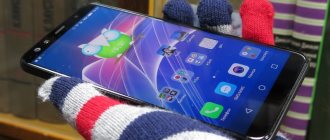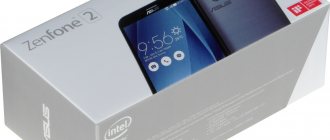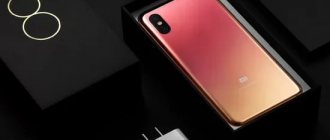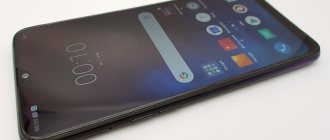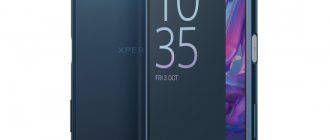Specifications LG V30+
- Screen: LG V30+: 6”, 2880 x 1440 pixels, (18:9 Quad HD+), 538 ppi, Always On, HDR 10 Gorilla Glass 5
- Camera: dual 16 MP with f/1.6 aperture, 13 MP f/1.9, 120 degree viewing angle, optical stabilization, dual LED flash
- Front camera: 5 MP, f/2.2, 90 degree viewing angle
- Chipset: Snapdragon 835 8 cores, 10 nm, 64 bit, up to 2.45 GHz
- Graphics chip: 540
- RAM: 4GB LPDDR4X
- Internal memory: 128 GB (UFS 2.0)
- Memory card: microSD up to 2 TB
- GPS and GLONASS, Wi-Fi (802.11a/b/g/n/ac), Bluetooth 5.0 LE, NFC6, dual bend
- USB Type-C 2.0
- Two Nano-SIM slots
- Mono speaker, 3.5mm jack, Quad Hi-Fi Audio, B&O Play
- Water and dust protection IP68, shockproof housing according to MIL-STD-810G standard
- Platform: Android 8.0 Oreo
- Battery: non-removable, 3300 mAh, Quick Charge 3.0, wireless charging
- Dimensions: 151.7 x 75.4 x 7.3 mm
- Weight: 158 grams
The best mode is “Food”
As standard for its flagships, LG installed a camera with two lenses in the V30+ - regular and widescreen. The main module has a 16 MP f/1.6 aperture based on a Sony IMX351 sensor with a viewing angle of 71 degrees. During the day, the photos come out wonderful - good autofocus, nice colors. Good shots are obtained literally on the fly. At night, the situation becomes a little worse - the picture becomes blurred and becomes a mess. The most ideal mode for shooting seemed to me to be “Food”, which quickly allows you to adjust the color of the picture.
The color is highly chameleon from delicate shades of lilac to strange metallics
The wide-format camera with a 120-degree angle is powered by a 13 MP Samsung S5K3M3 sensor. There are a lot of settings for shooting, just like in the G6. The CineVideo mode has appeared - ready-made color settings. This mode has a Point Zoom function, where you can select the area you want to zoom in on, and then use the slider to smoothly move it closer or further away.
Lock screen, camera modes, and always-on display options for clock and notifications
Original photographs.
A 3,300 mAh battery is easily enough for a smartphone to last for more than a day, and thanks for this it is worth saying to the OLED screen: for the same G6, with the same battery volume and format of use, most of the charge was consumed by the ever-burning LCD matrix . At the same time, the V30+ also supports QuickCharge charging, which will replenish the battery by 50% in 35 minutes.
Review of LG V30+. Design
Frameless smartphones have already begun to enter our lives with might and main, becoming the main trend of 2020. Back in early autumn last year, I was impressed by the incredibly beautiful design of the LG Q6. When creating the LG V30 and V30+, designers and engineers had to fulfill the task of creating a phone with the smallest bezels possible.
As a result, they managed to make an attractive smartphone with a “full-format” screen and thin frames. LG V30+ is devoid of sharp corners, rounded shapes flow from one part to another. Logos and cameras are located symmetrically relative to each other. Everything looks impressive and expensive.
And almost nothing causes dissatisfaction, the case materials look premium, in my hand I really felt that I had a flagship product.
Fortunately, the designers did not use plastic for the side frames of the LG V30+, preferring aluminum. The front and back are wear-resistant Gorilla Glass 5, the phone itself is painted black and, best of all, the plastic antenna strips are almost invisible.
The depressing thing is that there are small gaps between the frame and the glass panels where dust accumulates, and the oleophobic coating on the back cover is very weak. Fingerprints are difficult to wipe off.
Review of LG V30+. Ergonomics
What cannot be taken away from the LG V30+ is comfort. When I took it for a test, I thought that 6 inches would be too much for me and I wouldn’t be able to get used to the phone. But my fears were in vain.
The smartphone fits in your hand like a glove, it is light, comfortable and not at all slippery. The side edges do not dig into the hand. True, due to the fact that I have a small hand, it was sometimes inconvenient for me to reach the top edge, but this is the problem with all shovel-like devices.
The fingerprint sensor is combined with the power button and is located extremely conveniently on the back, it is fast and very accurate. In fact, you wouldn’t expect anything else from a flagship.
A good decision was to install a new vibration motor, which is finally on par with Apple's Taptic Engine. The vibration is now solid, tactile feedback has appeared when swiping notifications, when taking photos, and typing texts is not annoying.
Review of LG V30+. Screen
LG V30+ is equipped with a 6-inch P-OLED screen with QHD+ resolution (2880x1440 pixels), pixel density is 538 PPI. Brightness and contrast are at the level of Samsung Galaxy S8 or S8+ screens. The screen is comfortable to use in bright daylight.
The LG V30+ display is perfect for watching videos and movies, the picture is clear and natural. There is also support for HDR video, and this was my first experience watching such content on a smartphone. The black color is truly black, there are no highlights at the edges of the matrix. HDR significantly increases picture quality; we have a separate article about this technology.
The user can also configure the display of colors. For example, you can turn on the display mode for movies or for comfortable surfing the Internet.
I would also like to highlight Always-on Display, here this technology reaches a new level. The screen can be customized almost anywhere, you can change the content displayed, make the screen brighter, and schedule the screen to turn off at a specific time.
But the only thing that really disappointed me about the LG V30+'s screen was the display of colors at angles. It is not clear what this is connected with, or with raw software, or with something else. But the fact remains that at angles the phone turns into strong red or no less strong blue shades, depending on the degree of deviation.
But even with color distortion at angles, this is one of the best OLED screens available today. It's definitely no worse than the iPhone X and perhaps on par with the Super AMOLED in the Samsung Galaxy S8.
Display defects
The V30 is LG's first smartphone with an OLED display since the ill-fated G Flex 2. The novelty of this display is undeniable. With the new phone's HDR photography capabilities and Daydream VR optical image stabilization, the OLED's ability to produce deep blacks and vibrant colors marks an upgrade and improvement over previous generations of LG smartphones with LCD screens. Unfortunately, the disadvantages are more noticeable than the advantages.
The LG V30 features a 6-inch OLED screen, a complete departure from the LCD screens used in previous models
The "p" in pOLED stands for plastic, which has been used to make the display thinner and more flexible than glass would otherwise be possible - similar to the AMOLED screens Samsung uses on its Galaxy smartphones. Compared to the G6 and V20, the new V30's rounded edges are definitely a step in the right direction. It’s just that the display itself doesn’t yet reach the league that includes the “endless” display of the latest Galaxy models. Plus, in my experience, this screen is much easier to scratch than any other I've encountered—even with the Gorilla Glass 5 coating.
Samsung engineers have almost perfected their AMOLED displays found on the S8 and Note 8, making the V30's pOLED look a few generations behind the curve. In fact, colors often look a little cooler and duller on it than even on the G6. And at lower brightness levels, the V30's screen looks noticeably unbalanced, with areas of color instability or out-of-place graininess. The same shortcomings that were noticed on many copies of the newly released Google Pixel 2 XL smartphone, the screens of which were also made by LG, are repeated here.
Review of LG V30+. Camera
Most flagships in 2020 have a dual camera module, with the exception of the Pixel 2 and HTC U11. LG made the right choice by installing two camera modules in the LG V30+, one of which is responsible for super-wide-angle photos, and the other module for photos with a normal viewing angle, but with better quality.
The first main camera module received a Sony IMX351 sensor with an f/1.6 aperture. The lens consists of glass lenses and has a viewing angle of 71 degrees. There is also optical stabilization, which I think works well when taking photos on the move.
Daytime photographs are obtained with a minimum amount of noise and good detail. I also advise you to forcefully enable HDR mode, since without it the photos will have much less DD.
The LG V30+ takes decent photos in low light, but the camera takes some getting used to. The defect rate is quite high. I had to take several pictures of the same scene to choose the best one.
The wide-angle camera received a matrix from Samsung with a resolution of 13 megapixels. The viewing angle is 120 degrees. The super wide-angle lens with F/2.4 aperture allows you to capture stunning shots of architecture in good lighting. But at night it will be extremely difficult to film something without noise and movement, unless with a tripod.
Test shots of LG V30+:
From the camera settings, I can highlight two points - AI Cam and Qlens:
- AI Cam, using built-in AI, determines what is in front of you, be it a person or a building, and once the camera understands what you are filming, it will choose the best settings to capture. The technology is interesting, but requires improvement.
- Qlens is also powered by artificial intelligence. The meaning of the function is that if, for example, you point the camera at a pen, chair or any other object, the camera will identify the object and find it in various online stores. The idea is extremely interesting and in the future, I hope it will gain support in the Russian Federation.
There's not much to say about the front camera of the LG V30+. Small frames did not allow engineers to install a larger module. Because of this, the photos will turn out terrible in most cases. The front camera is only for video calls, I wouldn’t recommend it even for selfies on Instagram.
LG V30+ camera interface:
Shooting video in the LG V30+ was not particularly surprising, with the exception of the CineVideo option. The function allows you to record cinematic videos using all sorts of interesting effects, for example, zoom or special filters. But again, who needs this and who will use it if the zoom is digital, and in most cases people will shoot in Auto mode.
Overall, the LG V30+ camera turned out to be decent, but far from ideal and the top camera phones of 2020. True, I’m not an expert on this issue, it’s better to turn to more competent reviewers
